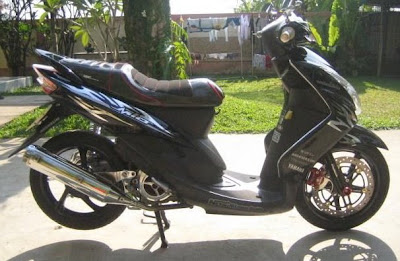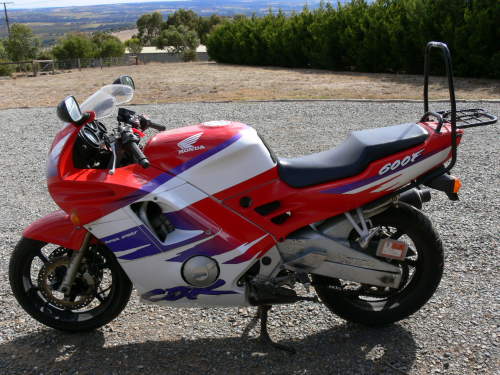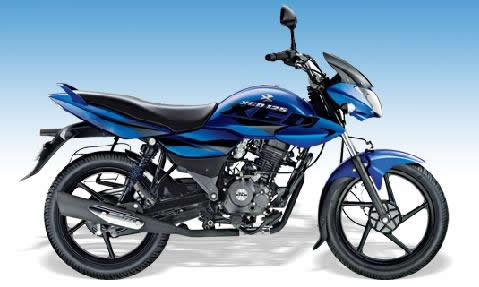Much before he penned the lines for the Ducati 916 and the MV Agusta F4, two of the most stunningly beautiful bikes ever made, Massimo Tamburini had designed another very significant motorcycle, one which has almost been forgotten today. Yes indeed, we’re talking about the Bimota SB2.
The Tamburini-designed SB2 isn’t, perhaps, as ‘beautiful’ as the 916 or the F4. At least not in the current context of the word. But it’s still strikingly individualistic – a machine that very much marches to its own beat. The bike was launched in 1977, priced at around US$10,000 – terribly expensive for its time.
The SB2 was fitted with a rather prosaic engine – an air-cooled 75bhp inline-four from the Suzuki GS750. But then, as now, Bimota were chassis specialists and that’s where the magic was. The Suzuki engine was bolted on to a light, stiff frame made of chrome-molybdenum steel tubing, which offered easily adjustable steering geometry. And the suspension comprised of a 35mm Ceriani fork at the front and Corte & Cosso monoshock at the rear – cutting-edge stuff for the late-1970s.
It isn't 'beautiful' in the conventional sense, but the SB2 is certainly stand-out individualistic...
The bike was fitted with Brembo disc brakes – 280mm at the front and 260mm at the back. The Campagnolo wheels were made of magnesium alloy, the fuel tank was made of aluminium and the bike weighed 196kg dry – about 30 kilos lighter than a standard Suzuki GS750.
So, what do its owners have to say about the SB2 today? Hmmm… with more than three decades having passed since the bike was introduced, and with Bimota having built only about 70 units of the bike, finding someone who actually owns one was difficult. Still, we managed to track down Robert Vaeth, who’s based in Connecticut, in the US, who owns a 1977 SB2.
‘I was originally attracted to the Bimota SB2 in the early 1980s, when my interest in Italian motorcycles began. I had only seen it in photos but always knew I would love to have one. The avant-garde design of the bodywork, along with the precision frame fabrication and machining won me over,’ says Robert. ‘There are five known SB2s in the United States, and it’s certainly a conversation starter at gas stations and bike meets. Most believe it is a decade newer than it really is,’ he adds.
‘When I purchased the bike, it had not been run in a number of years. My SB2 [which bears serial number 00036] began its life riding the streets of Italy, until it was purchased and brought to England, where it remained for several years and then ultimately to the eastern seaboard of the United States,’ says Robert. ‘After purchasing the bike in 2000, I restored it completely, getting it repainted and having the engine rebuilt,’ he adds.
‘Riding it is a complete joy! Steering, handling and power still make it a brilliant ride, even in modern times. The chassis, in my opinion, is miles ahead of all other bikes from that time period. Its perimeter frame and monoshock design, along with adjustable trail was later copied by many bike manufacturers, putting it years ahead of its time. The standard GS750 engine is upgraded with larger carburetors and velocity stacks by Bimota. The exhaust features a free-flowing Bimota designed pipe and muffler,’ concludes Robert.
Hmm... we reckon Robert is a very lucky guy - the SB2 is a veritable piece of Bimota history, and one hell of a motorcycle. Keep it rolling, friend...
via : http://www.fasterandfaster.net/









 The Tiger Boxer 250 RS all-rounder. Now there's a whishy-washy term. Giving motorcycles labels – sportbike, tourer, cruiser – gives us a mental picture of what we're getting. But the 'all-rounder' badge often suggest a bland compromise that's neither nowt nor summat.
The Tiger Boxer 250 RS all-rounder. Now there's a whishy-washy term. Giving motorcycles labels – sportbike, tourer, cruiser – gives us a mental picture of what we're getting. But the 'all-rounder' badge often suggest a bland compromise that's neither nowt nor summat.





 Suzuki Raider Big wheel by nah_kub
Suzuki Raider Big wheel by nah_kub Gilera Fuoco 500cc
Gilera Fuoco 500cc























 Tiger Motorcycle 250 cc model boxer in Thailand
Tiger Motorcycle 250 cc model boxer in Thailand
 SPECIFICATIONS:
SPECIFICATIONS:





